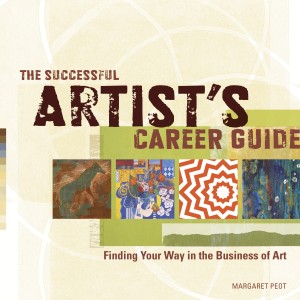
Albrecht Dürer, Soldier on Horseback, 1498. Albertina Museum Wien, Vienna
Freelancing as an Artist: Pros and Cons
The word “freelance” was devised in the Middle Ages, to describe a soldier of fortune–a mercenary who hired out his fighting skills to the highest bidder–a “free lance.”
For artists, freelancing means doing your art or artisan work for a variety of employees without any salaried commitment to any of them. If you are providing an art related service, you are probably working as a freelancer. Many artists have decided to be freelancers as there are few jobs that provide the kind of creative and time freedom they need to focus on their own studio work. There are some times when the freelance work aligns exactly with the work one does in ones studio, and that is great.
The benefits of a freelancer are many: You can set your own hours, work from your home studio or a studio outside your home, have multiple clients, and therefore a larger income base. You are not bound to an hourly wage, nor a salary, and can work at your own pace, which is often more satisfying and profitable.
The downsides to freelancing are that you have no real job security, no built in benefits (health insurance, disability, vacation pay, sick leave), and no pension. You must make your own contacts, and pay your own operating costs. You will probably have to hire someone to help with your taxes, as income from various employers, and keeping track of deductions can get complicated. And, as soon as possible, you will have to set up a retirement fund to draw from later in life. However, if you can see these “downsides” as the price to pay for having some freedom from a 9-5 job, they are not so onerous, and eventually they become routine.
When you work for someone else, they provide the workspace, and the the cost of materials, as well as providing an interface to interact with the world that brings jobs to you. All you have to do is show up and do a good job.
Sometimes people work for years as a freelancer, and then get snapped up for an “offer they couldn’t refuse” later in life to work for a company full time. Some people choose to freelance until they have a family, and then work for one of their contacts full time to have access to better health insurance and steadier pay. Sometimes people work full time, and then find a niche that they can thrive in, and break away from their full time job to become a freelancer.
Some people thrive on being a freelancer, while others prefer someone else do the business part and they can concentrate fully on their creative work. There is no right way to proceed with your life. You will have to decide what works best for you.
Bruce Walsh for Metro news says: “The Successful Artist’s Career Guide: Finding Your Way in the Business of Art…(is) teeming with worksheets and writing assignments intended to aid readers in divining their true calling, and they include scores of interviews with a variety of successful, working artists. Artist’s Career Guide is adamant that visual artists can lead healthy, financially stable lives. But, unlike other careers, it is a journey that requires personal tailoring — and introspection.” Read a free excerpt of The Successful Artist’s Career Guide on Amazon.

An excerpt from Successful Artists Career Guide Finding Your Way in the Business of Art, “What is Your Art Worth?” appears in the 2014 Artist’s & Graphic Designer’s Market, a reference guide for artists who want to establish or expand a career in fine art, illustration or graphic design, with up-to-date, individually verified market contacts, as well as info on grants, residencies, and interviews with artists and others associated in the business of art.

